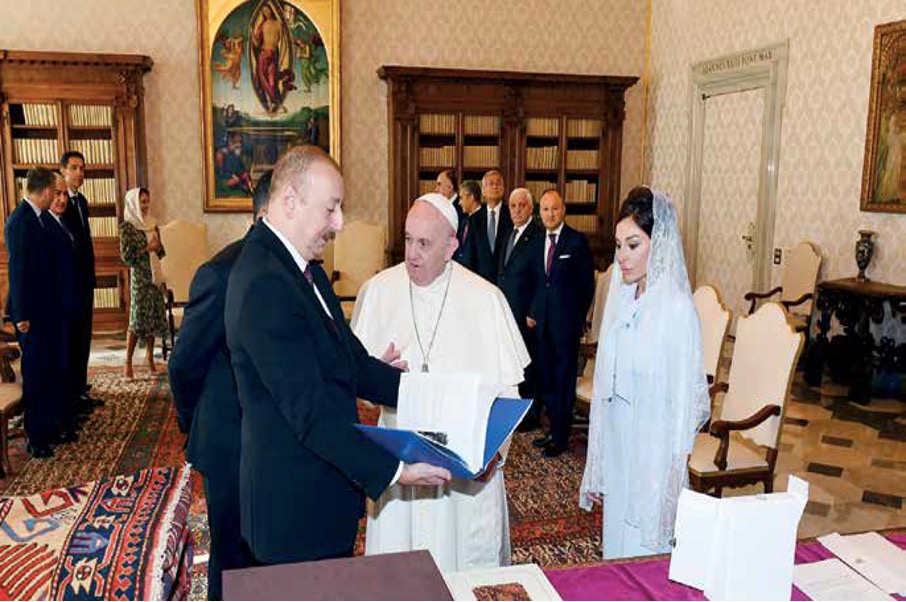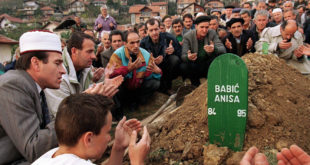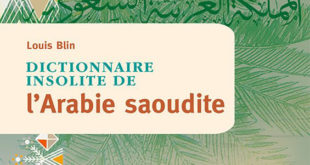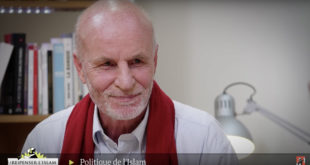Dr. Karim IFRAK
Doctor of the Practical School of Higher Studies (E.P.H.E)
Karim IFRAK is an Islamologist specializing in geopolitics in Muslim worlds.
__________________________________________________________

A multi-confessional and multi-ethnic country with Persian, Arab and European influences, Azerbaijan, since the proclamation of its first failed independence in 1918, has constantly praised its centuries-old tradition of tolerance and inclusiveness. Rich with a singular socio-cultural diversity woven on the Silk Road and in the shadow of the great empires, he was naturally raised to the rank, rather rare, of protector of a multiculturalism and multiconfessionalism that are reflected, until today, in his actions and his words.
A bridge between East and West, this Muslim-majority country nestled in the heart of the Caucasus is a zealous actor in the dialog between the Muslim and Christian worlds. Home to, almost jealously, a Catholic community among the most in the minority in the world, the Republic of Azerbaijan did not hesitate to sign, with the Holy See on 29 April 2011, an Agreement that is quite historic. Article 1 of the Agreement on the Legal Status of the Catholic Church in Azerbaijan states that: » The Republic of Azerbaijan, which recognizes religious freedom on the basis of its Constitution, guarantees the freedom to profess and practice the Catholic religion in public. The Catholic Church in the Republic of Azerbaijan has the right to organize itself, in accordance with the legislation of the Catholic Church and to carry out its mission within the framework of its religious competence and taking into account the legislation of the Republic of Azerbaijan. »
SUMMIT MEETINGS BETWEEN THE MUSLIM AND CHRISTIAN WORLDS
The (historic) Agreement on the Legal Status of the Catholic Church in Azerbaijan did not fall from the sky. It is the result of numerous mutual visits by the late President Heydar Aliyev in September 1997, in the Vatican, and by the late Pope John Paul II, in May 2002 in Baku. An exceptional visit during which Pope John Paul II announced to the whole world: « I came to this very ancient country, with admiration in my heart for the richness and variety of its cultures. Rich in diversity and Caucasian characteristics, this country has absorbed the treasures of many cultures, notably Persian and Altai-Turanian. On this land there were great religions: zoroastrianism coexisted with the christianity of the albanian church, which played such an important role in antiquity. Subsequently, Islam played an increasingly important role and today it is the majority religion of the Azerbaijani people. Since time immemorial, Judaism, which still enjoys great appreciation, has made its unique contribution. Even after the initial shine of the church weakened, Christians continued to live side by side with believers of other religions. This was made possible by a spirit of tolerance and mutual understanding of which country can only be proud ”.
Three years later (February 2005), President Ilham Aliyev visited the Vatican. A first visit followed by two others: in March 2015 and in February 2020. Paying courtesy, Pope Francis also went to Azerbaijan in October 2016. It was then an opportunity for him to openly declare : » I very much hope that Azerbaijan will continue on the path of collaboration between different cultures and religious denominations. That, increasingly, harmony and peaceful coexistence nourish the social and civil life of the country in its many expressions, ensuring all the possibility of making its own contribution to the common good. I hope that, thanks to God and the goodwill of the parties, the Caucasus can be the place where, through dialog and negotiation, disputes will be resolved and overcome, so that this region is a gateway between East and West.”.

HEYDAR ALIYEV FOUNDATION FOR THE RESCUE OF CHRISTIAN MONUMENTS
From these multiple visits, a great collaboration was to be born, starting in May 2012. And on the sidelines of a whole series of bilateral agreements signed between the Heydar Aliyev Foundation and the Pontifical Council for Sacred Archeology, several projects for the restoration of religious sites and monuments of Christianity were on the agenda. The most significant were the restoration between 2012 and 2015, alongside 60 other sites, of the early Christian catacombs of Saints Marcellinus and Peter, martyrs who were victims of the persecution of Emperor Diocletian at the beginning of the 4th century AD.. Featuring a collection of wall frescoes that make it a true museum of Paleo-Christian art, they also develop a collection of galleries that make it one of the largest in Rome. This first work was completed, and it was followed by the restoration, between 2016 and 2018, of the catacombs of the Basilica of San Sebastian. Two major projects followed, since 2020, by the restoration of the catacombs of Saint Commodilus. Catacombs, which according to Professor Fabrizio Bisconti (inspector at the Pontifical Commission for Sacred Archeology) contain artifacts dating from the early days of Christianity, as well as being the burial place of the Christian martyrs Felicio and Adauctus. Considered during the Middle Ages as a place of worship by the faithful, these high places still house several important frescoes. That, among others, of San Stefano, the very first Christian martyr, as well as that representing the transmission of the keys to paradise from the hand of Jesus to the apostle Peter. Its four-story underground part contains bas-reliefs (representing biblical scenes) considered to be one of the important monuments of early Christianity, on the fringes of a sarcophagus of the 4th century.
There were several reasons why Cardinal Gianfranco Ravasi, President of the Pontifical Council for Culture, called these projects not only an action to preserve the world’s humanitarian cultural heritage, but also to contribute to the consolidation of dialog between the Muslim and Christian worlds. And in this perspective, the President of the Pontifical Council for Culture did not hesitate to specify that: » Thanks to these cooperation agreements, one of Rome’s catacombs will be open to the public, adding another jewel to Rome’s cultural treasure. In 2025, Rome will host the anniversary events of the Holy Year, which are of particular importance to the Roman Catholic Church and are celebrated every 25 years. Tourists and pilgrims from all over the world will flock to the Eternal City. We therefore express our gratitude to the Heydar Aliyev Foundation and consider it part of our cultural community, as the Foundation, like us, focuses on the development of cultural and interfaith dialog. »

Another of the important projects, initiated by the Heydar Aliyev Foundation, is the restoration of the altar of Pope Leo I the Great (390-461): “Meeting between Pope Leo I the Great and Atilla, Emperor of the Huns”, located in the famous Saint Peter’s Basilica. A masterpiece by the remarkable Italian sculptor Alessandro Algardi, erected between 1640 and 1653. And still, between 2014-2016, an exceptional statue of Zeus, as well as several centuries old wardrobes, placed in the Sixtine room, underwent a restoration worthy of their historical and cultural value. This restoration took place after 16 illuminated manuscripts of Azerbaijan’s medieval poetic heritage, 11 from ancient Rome, and 65 digitized manuscripts, all owned by the Vatican Apostolic Library, were restored between 2013 and 2014.
Land of tolerance and dialogue, Azerbaijan has always made it a point of honor to maintain the spirit of proximity and reciprocity, in particular through projects to restore cultural heritage, in particular religious, regardless of its denominational origin. A conviction that has always been expressed, not only at the national level, but also internationally. In France for example, and since 2009, the Heydar Aliyev Foundation has been involved in the restoration of several buildings, such as the magnificent stained-glass windows (14th century) of Strasbourg Cathedral. A beautiful project followed by the restoration of seven other churches dating from the 12th to 12th centuries: those of Saint-Hilaire, Fresnay-aux-Sauvage, Saint-Hilaire-la-Gérard, Tanville, Courgeot, Saint-Paterne and New Year’s Eve in the Sarthe.
Also, through its actions invested in the service of respect for the Other, his culture and his convictions, Azerbaijan, a country with a Muslim majority, shows the good example, which others can follow, namely to take great care of the cultural heritage. Christian. This is a very high assessment of human relationships in their intercultural and inter-convictional dimensions, especially in conditions where intolerance and aggressive approaches by some regretfully become the norm.
 Musulmans en France L'actualité des musulmanes et musulmans en France
Musulmans en France L'actualité des musulmanes et musulmans en France



